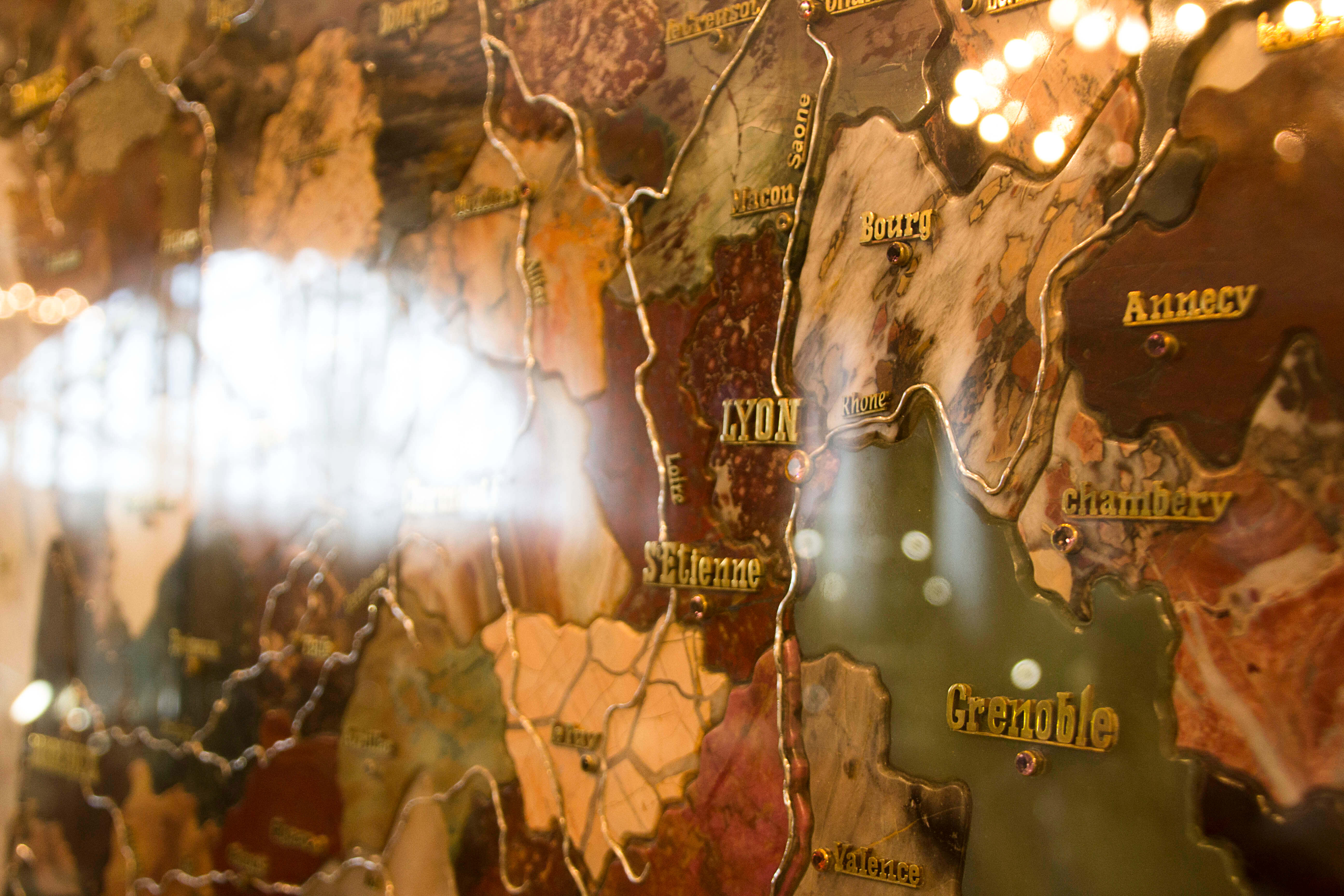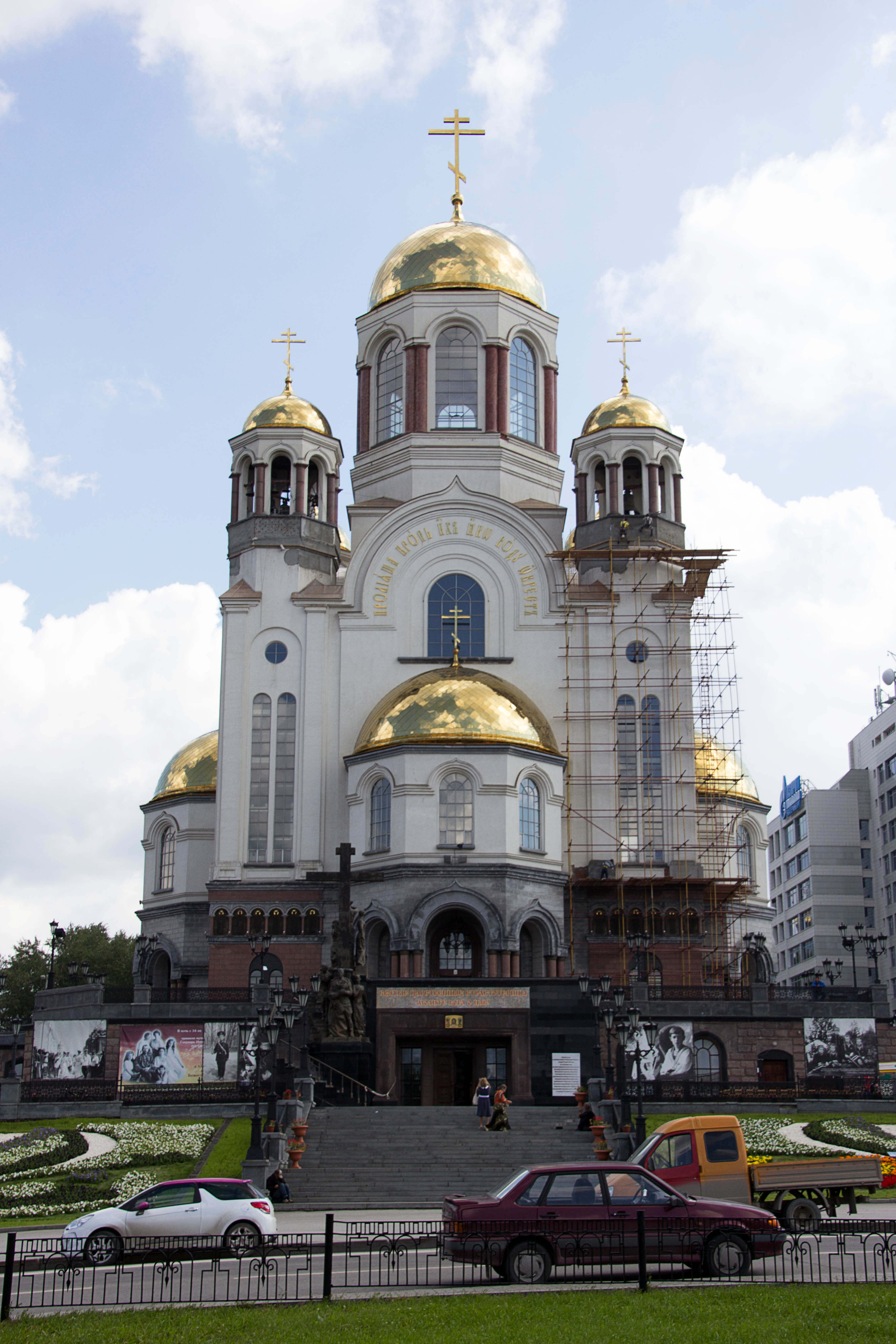For all that Yekaterinburg has a very grim history I found it interesting and perfectly welcoming. Catching the subway to my hostel at 11pm was my first impression of he city and I arrived with no trouble whatsoever. The hostel itself was a different story.
The girl sitting at reception didn’t appear to actually work for the hostel but she was able to give me sheets and a pillow and guide me to a bed. In the morning I was informed that there was no record of my booking and reception tried to charge me for my deposit again, not an excellent start. Eventually we got it all sorted and I headed out to explore.
There’s a physical red line painted on the pavement that winds its way through the whole town passing all of the major attractions so I spent most of the day following that.
One of the earliest stops was the Church of the Saviour on Blood, a huge white and gold building that sits on the site where the Romanov family lived out their exile and were eventually murdered. The Roman Orthodox church has canonised the whole family and the church was filled in equal parts with Russians praying to members of the family and tourists witnessing the spectacle.
I also visited the Museum of History of Stone-Cutting and Jewler Art that documents Yekaterinburg’s early history as a source for the riches of the Russian Empire. Marble, gold, diamonds and malachite were all mined in the Ural Mountains just outside Yekaterinburg, carved in the Yekaterinburg Stonecutting Factory and shipped west to Moscow, Saint Petersburg and the rest of Europe.



Map of France made from local stones and gems; Malachite desk set; Stamps and seals made from Yekaterinburg Stone cutting factory
The mid 19th century gold rush is also responsible for some of the more spectacular buildings in Yekaterinburg, including the above blue and orange building which now (apparently) serves as Putin’s holiday home.
Perhaps my favourite part of the city was the abundance of public art, much of which seems entirely out of place. Monuments to Michael Jackson and the Beatles (neither of which ever visited the city), a huge concrete keyboard on the river bank, lights decorated to look like eyeballs and an abundance of street art and graffiti. It certainly made the city seem much friendlier than it would have otherwise.








The next day I joined a Belgian couple on a small tour to visit the major sites just outside of the city: the Europe-Asia Border, the Tsar’s Obelisk, Ganina Yama and the mafia cemeteries. The Europe Asia border was supposed to be a huge bridge spanning the highway but after an economy slowdown it was downsized and now a mini version of the monument they’d hoped to build sits beside the road. What is particularly bizarre is that it is an immensely popular wedding photo destination for Asian brides, many of whom make the journey out there just for photos with the monument. The Tsar’s Obelisk is a much more impressive monument located slightly further north and it commemorates when Tsar Alexander II stopped on the Europe-Asia border and drank a glass of champagne to celebrate – tradition that continues to this day. While we didn’t have champagne we had cheap Georgian sparkling and plastic cups so I enjoyed a glass of ‘champagne’ while standing on two continents at once.



Gadina Yama is a church complex dedicated to the Romanov family on the site where their bodies were dumped and forgotten about for years. Each family member has their own chapel build in the traditional Russian wood cabin style and filled with mementoes from their life, it’s very clear that Russians have taken their designation as saints very seriously.
The mafia cemeteries were something slightly unexpected, our guide had a particular interest in the mafia history of Yekaterinburg and was keen to impart her knowledge of the disputes between Ural Marsh and the Centres in the 80’s and 90’s. While the gangs are mostly dissolved now (with their leaders going into local politics) during their heyday their influence stretched across Russia and the entire former Soviet Bloc. One snippet that I found particularly interesting was that when they were establishing themselves they took the movie ‘The Godfather’ as their bible and an illegally imported copy could be found in every members home. All that really remains of their dynasty now is the huge graves that murdered mafia bosses and their bodyguards were buried in. While the security cameras are now unplugged and the eternal flames have been allowed to burn out the graves are still a testament to the Yekaterinburg Mafia’s flair for the dramatic.



My time in Yekaterinburg was brief but it offered a unique snapshot of Russian history; from the opulence of the Tsars with their marble, malachite and gold s to the brutality of the Soviet regime and then the infamous Russian Mafia that established themselves in its demise. Russia’s third largest city and the so called ‘City of Romanovs’ certainly offered more than I had expected.

Mary Kenny August 23, 2015 at 12:07 pm
Another great interpretation of Russian history Lucy.
We are really enjoying your commentaries